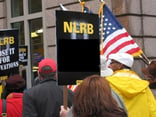The US Environmental Protection Agency (EPA) requires selected facilities to file Toxic Release Inventory (TRI) reports on either Form R or Form A, electronically to EPA and their state every July 1. These TRI reports are mandated by Section 313 of the Emergency Planning and Community Right-to-Know Act of 1986 (EPCRA; also known as SARA Title III since it was enacted as part of the Superfund Amendments and Reauthorization Act of 1986). (I summarized TRI reporting requirements here).
Read MoreAudit, Compliance and Risk Blog
EPA’s Latest National TRI Inventory Shows Continuing Reductions in Releases
Posted by Jon Elliott on Thu, Mar 08, 2018
Tags: Environmental risks, Environmental, EPA, Hazcom
EPA Withdraws “Once in Always in” Policy For Major Air Toxics Sources
Posted by Jon Elliott on Tue, Mar 06, 2018
The Clean Air Act (CAA) directs the Environmental Protection Agency (EPA) to define “hazardous air pollutants (HAPs)” that may pose acute health hazards, and to impose regulations to reduce those hazards. Controls include permits for “major sources” of HAPs based on “Maximum Achievable Control Technologies (MACT),” and lesser controls for non-major “area sources.” Since 1995, EPA policy has been that every emission source that met major source criteria at the time a MACT became effective is “once in, always in” and cannot requalify as a less-regulated area source even if it accepts legally binding controls that reduce its “potential to emit.” On January 25, 2018 EPA reversed that decades-old policy.
Read MoreTags: Environmental risks, Environmental, EPA, Greenhouse Gas, ghg, climate change, CAA, mact
California Adopts Plan for Greenhouse Gas Controls Through 2030
Posted by Jon Elliott on Tue, Feb 27, 2018
Since enacting AB 32 in 2006, California has pursued aggressive policies to reduce statewide greenhouse gas (GHG) emissions. Primary responsibilities are assigned to the California Air Resources Board (ARB), although other state agencies implement complementary policies within their areas of special jurisdiction. In addition to emissions control regulations, state law assigns ARB to develop a Scoping Plan that identifies the state’s strategic goals, and compiles the many tactical approaches through individual regulatory and incentive programs. ARB issued the first Scoping Plan in 2008, with an update in 2014 and the latest update in 2017. The rest of this note describes changes in the latest Scoping Plan to reflect the state’s ever-expanding GHG reduction goals.
Read MoreTags: Health & Safety, California Legislation, Environmental risks, Environmental, Greenhouse Gas, ghg
The U.S. Environmental Protection Agency (EPA) has been working for nearly six years to meet a legislative mandate to develop and implement an electronic manifest (“e-manifest”) system to replace the decades-old paper-based system. The Hazardous Waste Electronic Establishment Act of 2012 amended the Resource Conservation and Recovery Act (RCRA) and gave EPA three years, but it’s taken longer. EPA adopted e-manifest rules in 2014, but put them on hold until it could establish a suitable information management system (I wrote about these rules here). In January 2018 EPA published final e-manifest rules, including fees, and set June 30, 2018 as the initial compliance deadline.
Read MoreTags: Environmental, EPA
Regional Greenhouse Gas Initiative Extends Efforts Until 2030
Posted by Jon Elliott on Tue, Feb 13, 2018
One of the longest running sub-national greenhouse gas (GHG) control efforts in the U.S. has been the Regional Greenhouse Gas Initiative (RGGI) program. RGGI provides a cap-and-trade program covering GHG emissions from targeted fossil fuel power plants in participating northeastern states. The program t has just been revised and extended through 2030.
Read MoreTags: Environmental risks, Environmental, Greenhouse Gas, ghg, cap-and-trade
 Most employers promulgate a wide range of employee-related policies and work rules, which some compile in employment manuals. All too frequently, these policies and work rules contain ambiguities that employees try to parse to understand what rules really apply, and why. What if employees interpret – or might reasonably interpret – an ambiguity in a way that appears to restrict employees’ rights to organize themselves? Do these provisions violate the National Labor Relations Act (NLRA)?
Most employers promulgate a wide range of employee-related policies and work rules, which some compile in employment manuals. All too frequently, these policies and work rules contain ambiguities that employees try to parse to understand what rules really apply, and why. What if employees interpret – or might reasonably interpret – an ambiguity in a way that appears to restrict employees’ rights to organize themselves? Do these provisions violate the National Labor Relations Act (NLRA)?
Tags: Business & Legal, Employer Best Practices, Employee Rights, NLRB, directors, directors & officers
On June 22, 2016 President Obama signed the “Frank R. Lautenberg Chemical Safety for the 21st Century Act,” revising the Toxic Substances Control Act (TSCA) TSCA extensively. I’ve written about the major programmatic changes here, here, and here. In addition to those Big Picture changes however, the 2016 Amendments provide a number of targeted revisions.
Read MoreTags: Health & Safety, Environmental risks, Environmental, Hazcom, tsca
A Cautionary Tale for Employers Drafting Discretionary Bonus Plans
Posted by Jennifer M. Fantini on Tue, Jan 23, 2018
 In the recent British Columbia Supreme Court decision of Kenny v. Weatherhaven Global Resources Ltd., the plaintiff successfully claimed unpaid bonuses and bonus amounts owed over the contractual notice period of approximately $170,000.
In the recent British Columbia Supreme Court decision of Kenny v. Weatherhaven Global Resources Ltd., the plaintiff successfully claimed unpaid bonuses and bonus amounts owed over the contractual notice period of approximately $170,000.
Tags: Employer Best Practices, Employee Rights, Canadian, directors, directors & officers
California’s New Cleaning Products Right to Know Act – A First Look
Posted by Jon Elliott on Tue, Jan 16, 2018
Does your employer’s Hazard Communication program pay attention to cleaning agents used in the workplace – bleaches, disinfectants, glass cleaners, etc? If it does more than mention their existence and note that they’re probably corrosive and maybe toxic, you’re almost certainly in the minority. In most workplaces, workers who use cleaners are exposed to undisclosed or unexplained chemical hazards. And even if your organization’s employees do receive this information, does your employer contract out janitorial and other service work without ensuring that those night janitors are fully trained and protected?
Read MoreTags: Business & Legal, Employer Best Practices, Employee Rights, Environmental risks, Environmental, Hazcom
If someone receives occupational direction and/or compensation from more than one entity, then who’s the boss? Sometimes it’s obviously one or the other, sometimes it’s not clear which one is, and sometimes the answer may be “both.” The answer has important implications, not just for who writes a paycheck but for who is subject to legal requirements and prohibitions under federal, state and local laws. The National Labor Relations Board (NLRB) upended established definitions in 2015, in a decision that Browning-Ferris Industries of California (BFI) was a joint employer with the company (Leadpoint Business Services) that provided employees who worked at one of BFI’s sanitary landfills, since BFI reserved the right to intervene in a variety of labor decisions. By a party-line 3:2 vote (with Democrats in the majority) NLRB “restated” agency and judicial precedent and found that the two companies were indeed joint employers, which realigned the employees’ access to collective bargaining (NLRB’s area of jurisdiction). The other two members dissented vociferously, for a variety of reasons.
After the BFI decision, employer groups and many Republican legislators argued that the correct standard was actual control not potential control, and that the majority was abandoning the common law approaches it claimed to follow. Early in December 2017, the U.S. House of Representatives passed legislation to write a definition of “joint employer” into the National Labor Relations Act (NLRA), in order to reverse this expansive interpretation (HR 3441, the “Save Local Business Act”). However, on December 14 the NLRB – now with a 3:2 Republican majority after President Trump filled two intervening vacancies – voted on a party line vote to rescind the BFI case analysis and return to an actual control test. The new decision is in Hy-Brand Industrial Contractors, Ltd. and Brandt Construction Co., as a single employer and/or joint employers. The remainder of this note discusses the issue and this decision, which probably resolves the issue … until the next election that changes the balance of power again.
Who Can Be a “Joint Employer” Under the NLRA?
The NLRA does not presently include a statutory definition of “joint employer” (or even “employer”, for that matter, other than to clarify that “any person acting as an agent of an employer” is also considered an employer (29 USC § 152(2))). In the absence of a statutory definition, NLRB and courts look to other labor laws and the “common law” when considering whether an employer-employee relationship exists. This case-specific review allows flexibility to adapt policies to changing workplace realities, but also means that guidance can be unclear and tends to vary with the opinions of a majority of the five NLRB Board members.
Read MoreTags: Business & Legal, Employer Best Practices, Employee Rights, NLRB








